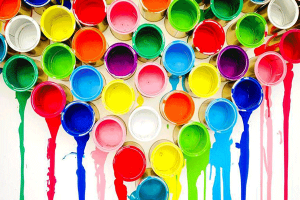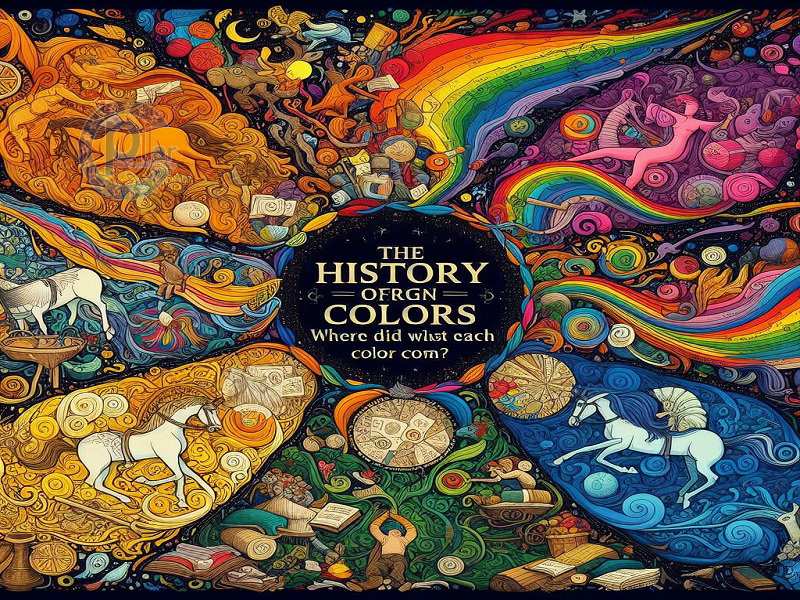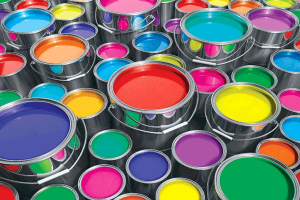The History of the Emergence of Color
In today’s world, colors play a significant and prominent role in our lives. From artistic beauty to influencing emotions and even being used in various industries, colors are important elements that adorn the world around us. This article delves into the history of the emergence of colors and seeks to provide an interesting journey for the reader, from their earliest rudimentary applications in ancient times to the modern technological advancements in the production and use of colors.
This introduction, by emphasizing the importance of colors in daily life and art, immerses the reader into the fascinating world of the history of colors. Furthermore, by highlighting the impact of colors in modern architecture and the digital world, the article demonstrates how today’s technology has innovatively transformed the thinking and utilization of colors. From the beginning to the present day, you will accompany us on a journey through various artistic works, different industries, and even the digital world to recognize the diverse aspects of colors over time.
Historical Background of Colors
In decades and centuries past, humans utilized natural sources to create colors. These early experiences in color production marked the beginning of a long journey to discover the magic of colors.
Early Use of Natural Resources
During ancient times, humans utilized materials such as soil, plants, and minerals to produce colors. These resources were often obtained in the form of powders or liquid dyes. For example, green pigment was derived from plants and flowers, while red pigment was extracted from mineral substances such as iron oxide.
The Role of Colors in Ancient Art and Culture
Colors have played a significant role in art and culture since ancient times. Paintings, handmade patterns, and ancient artworks bear witness to the influential role of colors in bygone eras. Each color in these periods had its own meanings and symbols, aiding in a subjective interpretation of the surrounding world.
Technological Advances in Color Production
Throughout the centuries, with technological advancements, humans delved into the discovery and utilization of chemical substances for color production. These advancements led to the creation of new and more stable colors, enabling a wider and more extensive use of colors across various industries.
So far, we have embarked on a journey through time from the inception of color usage to significant technological advancements in their production. This evolutionary path of colors from ancient times to the present day is a captivating story of inventions and discoveries that have profoundly influenced human culture and life. In the following, we will explore some of these advancements together.
Discovery and Use of Chemical Substances
With the emergence of chemistry, the possibility of using chemical substances for color production came into existence. In the 19th century, chemical substances such as aniline and sulfur were mostly utilized, a feat showcased by chemists like William Perkins.
Key Inventions in the Color Production Process
In the early 20th century, significant inventions took place in the color production process. For instance, the famous primary colors CMYK (Cyan, Magenta, Yellow, Black) for color printing were invented by Leonhard Hanschel in 1906.
More Stable and Diverse Colors
In the following decades, research on colors shifted towards creating more stable and diverse hues. This included the development of waterproof colors, heat-resistant ones, and nanostructured colors with unique properties.
Colors in Electronics and Illumination
Technological advancements have enabled us to utilize colors in various industries. From LED lighting colors to electronic hues in different devices, technology has played a significant role in color production and enhancement.
Smart and Adaptive Colors
Modern technology allows us to alter colors using smart technologies. Electronically adjustable colors are employed in some consumer devices and even household items.
Technological advancements in color production have transformed from the simple world of soil and plants to a complex and innovative realm of chemical substances and cutting-edge technology. These advancements not only enhance beauty and art but also have significant impacts on various economic and industrial sectors.
Use of Colors in Art History
Colors have played a significant and influential role in art history. From ancient times to the present day, artists have used colors as a means to convey emotions, create visual effects, and add depth and beauty to their works.
The Role of Colors in Ancient Times
In ancient art, artists used natural sources to create colors. For example, in the wall paintings of Pompeii, natural colors like soil and plants were used to decorate the walls. Colors during this period not only served aesthetic purposes but also held specific meanings and symbols.
Evolution in Renaissance Art
During the Renaissance period, artists not only used natural colors but also incorporated newly obtained colors from chemical techniques. The development of oil painting techniques allowed colors to be depicted with greater detail, conveying emotions more effectively to viewers.

تاریخچه رنگ
Colors and the Abstract Art Revolution
During the abstract and art revolution era, artists used colors in more innovative and creative ways. Color combinations and the use of contrasts to create visual effects, as well as the violation of traditional art rules in using colors, brought this period into a veil of new and endless artistic perspectives.
The Influence of Colors on Emotions and Message Conveyance in Contemporary Art
In contemporary art, artists use colors as a new language. Each color has a specific role in conveying emotions, and artists pay close attention to designing and selecting colors. Colors in this period are also used as a means to convey social, cultural, and political messages.
Colors in Digital Art
With technological advancements, artists extensively use colors in digital art. The capabilities of creating colors and special effects through graphic software have opened up a new world of innovation and creativity for artists.
In summary, the use of colors in art history has always played an important role in the evolution of art and the conveyance of ideas and still continues. From ancient wall paintings to contemporary artists’ works, colors have a powerful and captivating language in the art world.
Colors in Daily Life and Industry
Colors play a vital role in daily life and industry. From adding beauty and attractiveness to our living environment to various applications in different industries, colors have a widespread presence in our lives. Below, we’ll examine the impact of colors on daily life and industry.
Colors in Beauty and Environmental Design
Colors are used in our daily lives to create beauty and diversity in the living environment. From choosing colors for walls and furniture in homes to using colors in flowers and plants, each plays a role in creating a pleasant and enjoyable atmosphere.
Colors in Advertising and Marketing
In the marketing industry, colors are crucial for attracting customers’ attention and creating brand identity. The choice of colors for logos, product packaging, and even in advertisements has a significant impact on consumer behavior.
Using Colors in Architecture and Interior Design
In architectural and interior design, colors play an important role in determining the atmosphere and energy of the environment. Choosing colors for walls, flooring, and decorative items in a way that creates an appropriate combination helps in attracting attention and increasing comfort in a particular space.
Colors in Various Industries
In various industries, colors are used as a means of differentiation and distinction. Labels, product packaging, cars, clothing, and even food items are designed using colors to identify and attract customers’ attention.
Colors in Public Spaces
Colors also play a significant role in public spaces. For example, traffic signal colors on streets and roads are important for information dissemination and safety. Additionally, symbolic colors in delineating various points in cities play an important role in attracting attention and enhancing the beauty of the environment.
Colors in the Digital Age
In the digital world, colors play a crucial role in visualization and graphic design. From choosing colors for web pages to using colors in software design, all contribute to creating a positive and desirable user experience.
Considering these points, it can be said that colors in daily life and industry serve as an attractive and key element, having a significant impact on us and our surrounding environment and widely contributing to creating beauty, conveying information, and determining emotions.
Colors in the Modern Era
In the modern era, colors have taken center stage as a key element in art, design, architecture, and even modern spaces. This era, with its intrinsic characteristics, cultural diversity, and technological advancements, has greatly influenced the use of colors in various fields.
Colors in Contemporary Art
In contemporary art, artists use colors in new and innovative forms and combinations. The choice of colors in modern art often aims to create visual effects, convey spiritual messages, or highlight emotions.
Colors in Modern Architecture
In modern architecture, the use of colors is very common for defining the identity of buildings, attracting attention to specific points, and creating visual advertisements. Buildings, through the use of modern color combinations, not only blend with the surrounding environment but also add more attractiveness and beauty to architecture.
Colors in Industrial Design
In the field of industrial design, the production of products in a beautiful and attractive manner often relies on the selection of appropriate colors. Colors in this area are used to distinguish products, encourage purchases, and create positive user experiences.
Colors in Urban Spaces
In modern urban spaces, the use of colors has become common for creating recreational areas, encouraging travel on streets, and attracting attention to ordinary public facilities. Paintings, symbols, and colorful signs in these spaces are used to liven up and bring joy to the urban environment.
Colors in Fashion and Clothing Design
In the fashion and clothing design industry, colors play a very important role. Choosing modern and attractive colors for clothes has a significant impact on attracting attention and creating a modern style.
Colors in the Digital World
Digital technology and graphic design also heavily rely on colors. Colors are used in web design, software, computer games, and electronic devices to attract attention and create suitable user experiences.
In general, in the modern era, colors are used as a visual language to convey ideas, emotions, and identity and are directed in innovative forms and manifestations in art and design.
Color Technology in the Digital World
Color technology in the digital world has provided users with extensive capabilities, new features, and extraordinary visual experiences. These technologies include various fields such as displays, digital photography, graphic design, and even virtual and augmented reality (AR and VR).
Displays and Screens
Displays use various technologies such as LED, OLED, and QLED to produce unique and high-quality colors. High resolution, high contrast ratio, and the ability to display vivid and accurate colors are some of the characteristics of these displays.
Digital Cameras
Digital cameras with advanced capabilities in color analysis, sensitivity to light, and the use of image processing algorithms enable high-quality photography with vivid and real colors.
Graphic Design and Image Editing Software
Graphic design software like Adobe Photoshop and image editing software like Lightroom use advanced tools to control colors, white balance, and color correction. Artificial intelligence technologies also help improve processes and increase efficiency in this area.
VR and AR
In virtual reality (VR) and augmented reality (AR), color technology is used to create virtual reality experiences and integrate real-world elements with virtual ones. These technologies use colors to create a natural and amazing sense in the user experience.
Colors in Web and Digital Media
Color technology plays a crucial role in web design and digital media. Choosing web colors, designing graphic features, and creating attractive user experiences are among the applications of this technology.
Smart Lighting
Smart lighting systems, using LED and modern technologies, intelligently adjust colors and light intensity. This capability allows users to adjust the environment according to their mood and activities.
It is clear from these examples that color technology in the digital world is extensively used in various fields and enhances user experience and visualization to a new level.
Conclusion
In conclusion, color technology in the digital world has provided extensive capabilities for creating visual experiences. From displays with high resolutions to digital cameras with advanced features, technology has helped in creating lively, accurate, and attractive colors. In the modern era, colors are used as one of the most important visual elements in art, architecture, design, and digital spaces, playing a key role in enhancing user experience and visualization.
refrence: History of the origin of color











